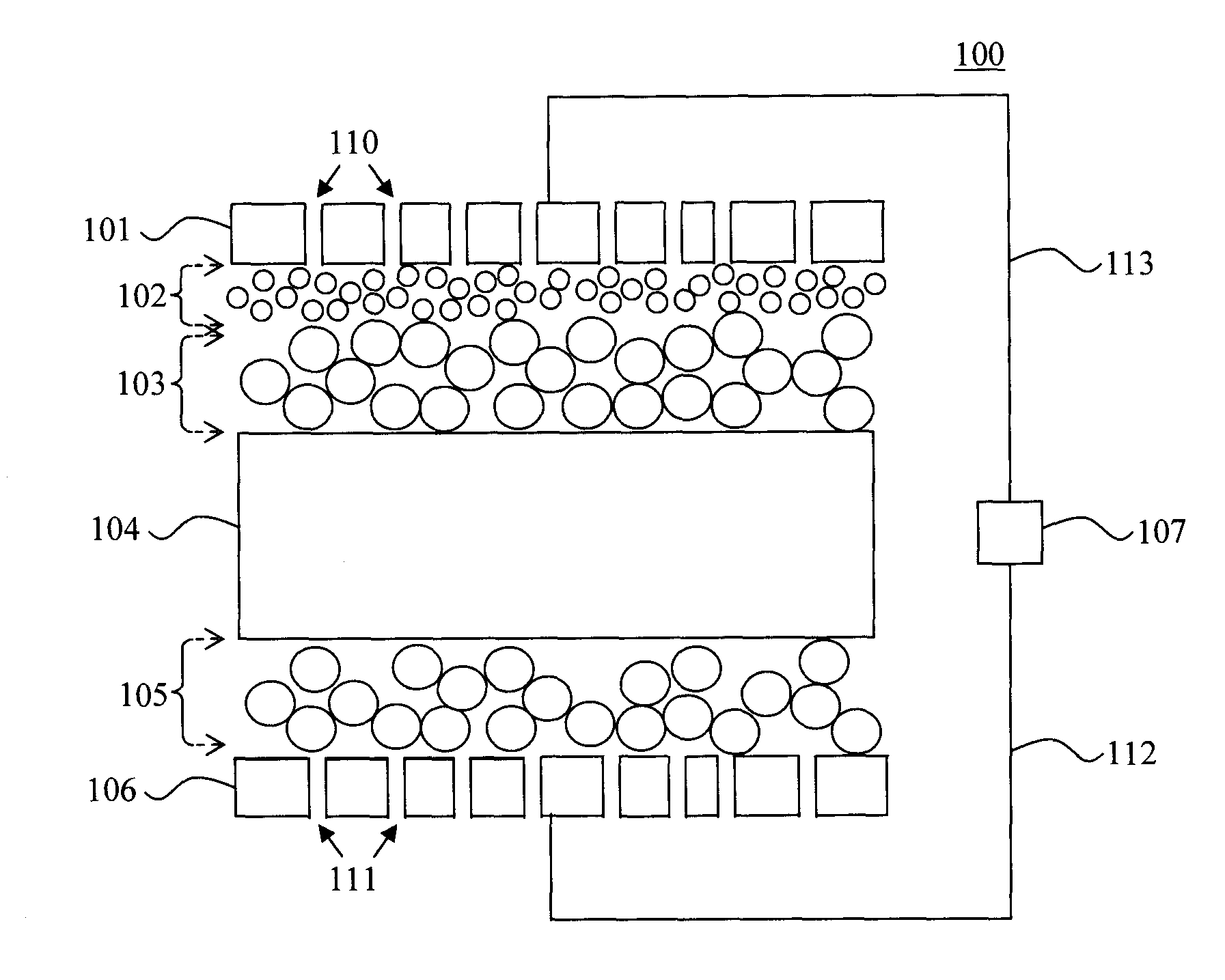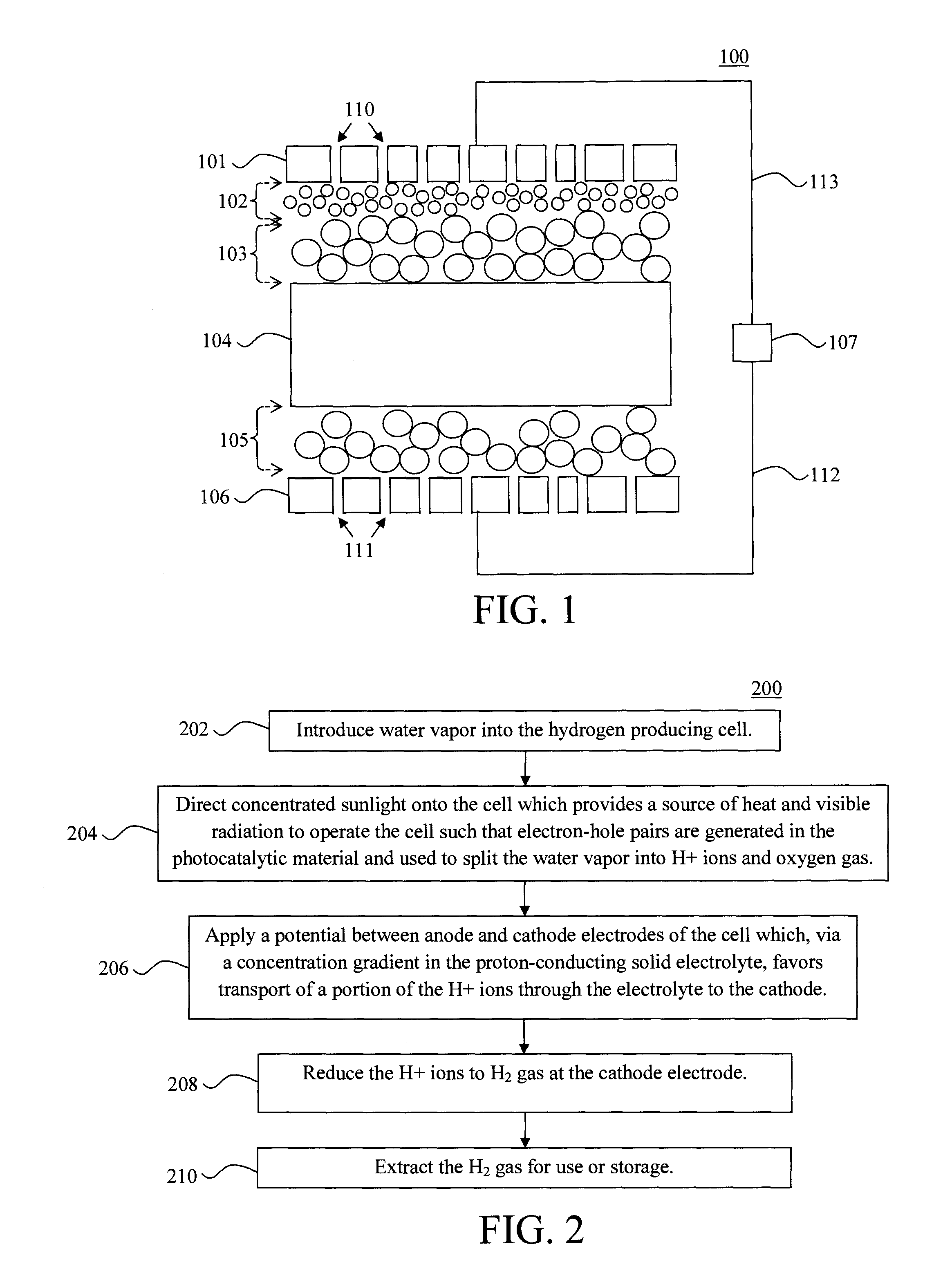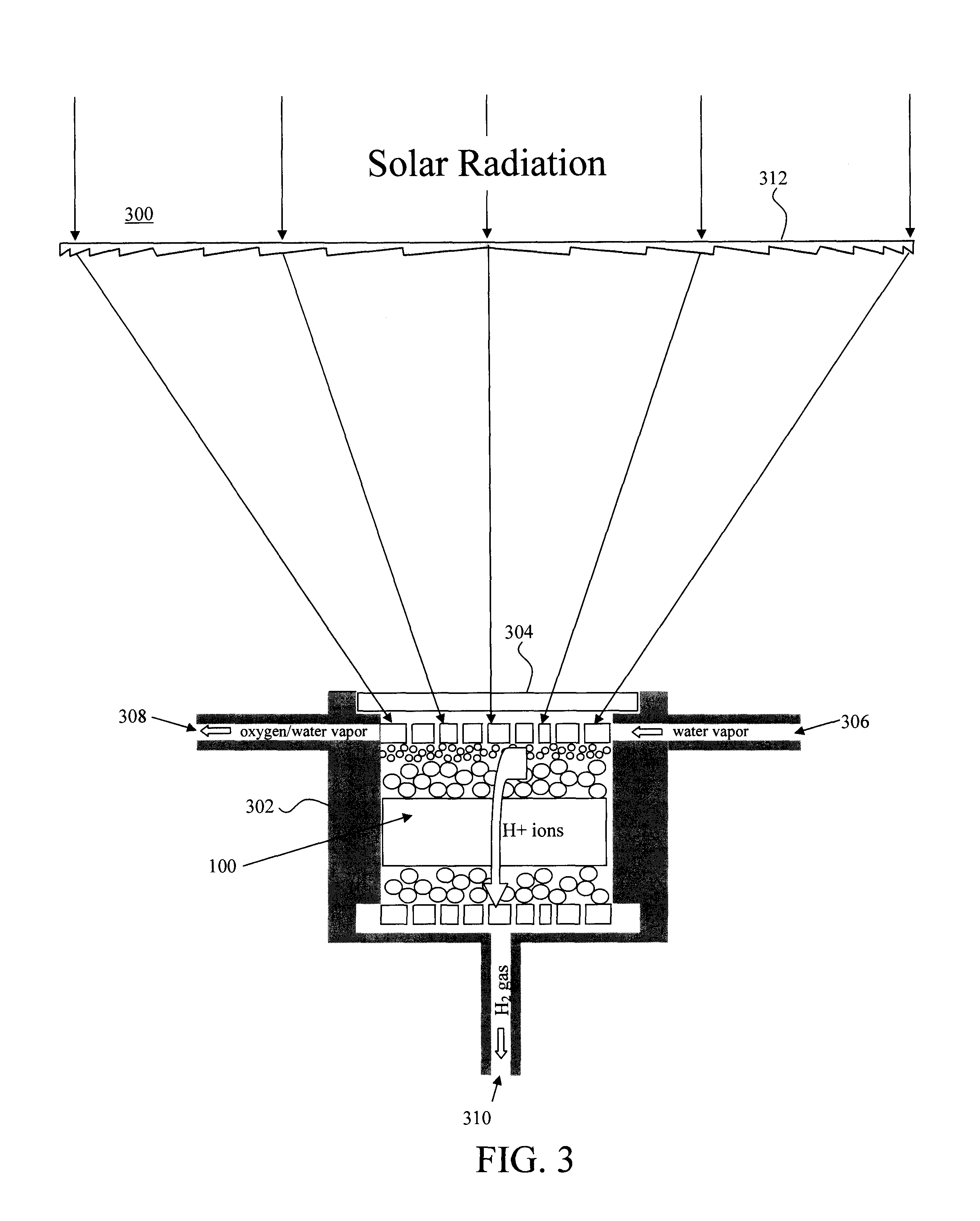Techniques for Photocatalytic Hydrogen Generation
a photocatalytic and hydrogen generation technology, applied in the field of photocatalytic hydrogen generation, can solve the problems of poor overall efficiency, thermodynamically inaccessible heat energy that evolves from the portion of incident light that is not photovoltaicly converted to electricity, etc., and achieve the effect of reducing hydrogen ions
- Summary
- Abstract
- Description
- Claims
- Application Information
AI Technical Summary
Benefits of technology
Problems solved by technology
Method used
Image
Examples
Embodiment Construction
[0014]Provided herein are techniques for using concentrated sunlight to catalyze the splitting of water to produce and isolate hydrogen, thereby generating a useful fuel from abundant starting materials. The present techniques employ a hydrogen producing cell(s) which generally includes an assembly wherein layers of a photoactive material and a solid electrolyte are sandwiched between (optionally porous) electrodes. During operation, incident sunlight serves as both a source of heat and visible radiation to split water via the photoactive material. Hydrogen ions resulting from the water splitting at the photoactive anode electrode are directed through the solid electrolyte to a cathode electrode, where they are reduced to hydrogen gas for immediate use and / or storage.
[0015]The present hydrogen generation cell is now described in detail by way of reference to FIG. 1. As shown in FIG. 1, a hydrogen producing cell 100 according to an exemplary embodiment of the present techniques has a...
PUM
| Property | Measurement | Unit |
|---|---|---|
| operating temperature | aaaaa | aaaaa |
| transparent | aaaaa | aaaaa |
| temperatures | aaaaa | aaaaa |
Abstract
Description
Claims
Application Information
 Login to View More
Login to View More - R&D
- Intellectual Property
- Life Sciences
- Materials
- Tech Scout
- Unparalleled Data Quality
- Higher Quality Content
- 60% Fewer Hallucinations
Browse by: Latest US Patents, China's latest patents, Technical Efficacy Thesaurus, Application Domain, Technology Topic, Popular Technical Reports.
© 2025 PatSnap. All rights reserved.Legal|Privacy policy|Modern Slavery Act Transparency Statement|Sitemap|About US| Contact US: help@patsnap.com



